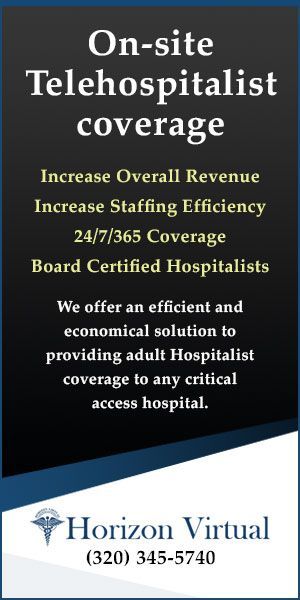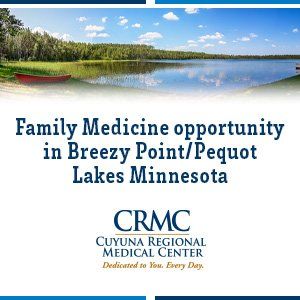very five years, as part of our public health accreditation process, the Minnesota Department of Health (MDH) releases the Minnesota Statewide Health Assessment (SHA). The SHA is a comprehensive examination of health in our state. Because it focuses on health, it examines health outcomes and the health-related social factors that contribute to physical, mental and social well-being. The SHA identifies pressing health concerns, such as the cost of and location of care, affordable housing and child care, social isolation and extreme weather events; describes the factors that shape the distribution of health risks and protective factors; lifts up many of the state’s community assets, including opportunities for civic engagement and outdoor recreational spaces; and describes policy success stories, such as the expansion of paid sick leave and high-speed broadband internet access that will make it easier for Minnesotans to live healthier lives.
cover story one
Assessing and Advancing Community Health
The overarching value of equity
By Brooke Cunningham, MD, PhD
In a state like Minnesota, in which public health is decentralized, each public health department — state, local or tribal — voluntarily and independently decides whether to seek accreditation from the Public Health Accreditation Board (PHAB). According to the PHAB, accreditation measures a health department’s performance against a set of nationally recognized, practice-focused and evidence-based standards associated with providing core public health protections and services. Those core public health services include population health assessment and surveillance, community partnership development, policy development and support, and equity. Equity is an overarching value and cuts across all components of public health practice.
Achieving Equity
To do public health well and equitably, public health departments must have a deep understanding of and respect for the communities they serve. To ensure this level of knowledge, engagement and responsiveness, the accreditation process requires public health departments to conduct community health needs assessments. The 2022 PHAB Standards & Measures for Accreditation make clear that a community health needs assessment differs from a statistical report in that it is developed collaboratively with the community. Public health departments rely on community members to (a) provide information (e.g., through surveys or focus group participation), (b) interpret data, (c) prioritize areas of focus, and (d) co-develop community health improvement plans.
Our state compares quite well compared with other states on health metrics.
The needs assessment and planning process improves information flow, transparency and shared decision-making. Community engagement helps a health department identify factors that contribute to adverse health outcomes and to better support the communities they serve. The process facilitates alignment and joint responsibility by bringing people together across multiple sectors that have a shared stake in community health and well-being. For example, MDH created the Healthy Minnesota Partnership, which includes leaders from local public health departments, state agencies, health care and community-based organizations from across the state.
Our SHA is very similar to the community health needs assessments conducted by nonprofit and/or tax-exempt hospitals every three years, as required by the Internal Revenue Service (IRS). The IRS requires nonprofit hospitals to gather input from community members (or individuals or organizations serving or representing them) and at least one state, local or tribal public health department or State Office of Rural Health. Hospitals must consider the health of all residents within their catchment areas, including people who are medically underserved and may rarely, if ever, become a hospital’s patients due to barriers such as the cost of care, language difficulties or the lack of transportation. Because hospital catchment areas and local public health jurisdictions overlap and health care and public health are already partners in health, hospitals and local public health departments often work together to fulfill their respective requirements for community needs assessments. PHAB guidance instructs health departments to pay particular attention to the needs of those who are socially vulnerable, face greater obstacles to optimal health and are more likely to be medically underserved. I summarize the findings of the SHA in my foreword to the report — here’s an excerpt:
Not surprising, much of the data are consistent with what we have seen before. Our state compares quite wellwith other states on health metrics, in part due to overall high educational attainment, low unemployment and low rates of uninsurance. However, the data again show people identifying as Black and American Indian in Minnesota have worse health outcomes across most metrics, reflecting the persistent challenges of eliminating health inequities in our state.
Health equity both informs assessment methods and consistently emerges as a health priority in our SHA. In their report, “What is health equity?”, Paula Braveman, MD, MPH, and director of the Center for Health Equity at the Universty of Caifornia, and her colleagues define health equity as:
“That everyone has a fair and just opportunity to be as healthy as possible. This requires removing obstacles to health such as poverty, discrimination, and their consequences, including powerlessness and lack of access to good jobs with fair pay, quality education and housing, safe environments, and health care.”
Given these social determinants of health, eliminating health inequities requires a “whole person — whole community” approach. Ensuring that all people and all sectors have a voice in community health needs assessment and planning is critically important, so that we have broad buy-in, identify a comprehensive set of strategies, and can coordinate efforts.
Yet it is still the case, despite embracing equity as a value, that efforts at inclusion often fall short. Racial and ethnic minorities, people living with disabilities, young people, people who live in poverty, sexual and gender minorities and other socially marginalized groups are often represented more in the quantitative data than in the collaborative process. At MDH, we are intentionally adding members to our Healthy Minnesota Partnership so the partnership better reflects the demographics of our state. That said, to achieve the partnership’s goals of optimal health for all Minnesotans, where everyone can truly thrive, we need Minnesotans with relatively high levels of social, political and financial capital (yes, physicians, I’m talking about you) also to advocate consistently for solutions that will substantively improve the social conditions that shape your patients’ lives.
Certainly there are several formidable challenges in health care right now. Across the board, demand for services seems to be outpacing supply, especially for mental and behavioral health, dental care and long-term care. In rural areas of the state, hospitals have closed and some that remain open have lost essential services like obstetric care. The cost of care and medication is more than many Minnesotans can afford, and high numbers of Minnesotans report health care discrimination due to race, gender identity, sexual orientation or disability. And yet, as we consider health, it is paramount to shift our focus. As my predecessor, former Health Commissioner Jan Malcolm, wrote in her introduction to the report, Recommendations to Support World-Class Academic Health Professions Education, Research, and Care Delivery: Governor’s Taskforce on Academic Health at the University of Minnesota:
We should better prepare physicians to advance the health of communities.
We can’t clinically treat our way to health no matter how good our providers or technologies are. We also know that barriers to access and unequal experiences in health care for marginalized populations in our current system make health disparities worse. Nevertheless, we underinvest in the community health and prevention strategies that could have the most impact on the health of the population as a whole. It is often the investments in the high-tech end of medicine and in building health care infrastructure that crowd out these upstream investments.
If former commissioner Malcolm is right (and I think she is) we should better prepare physicians to advance the health of communities as part of their professional roles. Many of us came into medicine with a goal to improve population health and were taught to do that one person or one family at a time. Population health, which I equate to community health, requires a different set of analytic, interpersonal and political tools. Developing skills in policy analysis and advocacy, evaluating health care reimbursement models, leadership, public health informatics and community engagement —in the classroom and through longitudinal community-based placements — could have a strong positive impact on physicians’ readiness to advance community health.
Finally, there are current opportunities to more robustly address the social determinants of health that have not been fully leveraged. For example, nonprofit hospitals could increase investments in community-building activities, such as the provision or rehabilitation of housing; investing in childcare programs or youth mentoring programs; small business and workforce development; and creating violence prevention and leadership development programs for community members. If there is evidence that these community-building activities improve health, they would count toward community benefit expenditures. Evidence, however, shows that nonprofit hospitals’ investment in community building has decreased over time. Sara Rosenbaum and colleagues discuss potential reasons why there may be low uptake of community building activities in their Health Affairs blog, “Encouraging Nonprofit Hospitals to Invest in Community Building:”
The IRS permits hospitals to report community building activities as a form of community health improvement – and thus community benefit expenditure with evidence showing the link between the community-building activity and community health and safety. This approach represents a major advance in IRS policy, enabling hospitals to move more decisively in the direction of public health investment. At the same time, the policy places the burden on hospitals to justify each community building expenditure on a case-by-case basis, potentially leading to greater reporting burdens and a good deal of uncertainty over how the IRS may rule. As a result, hospital administrators and their counsel may be wary of shifting their expenditures out of concern that the IRS may ultimately refuse to recognize certain types of investments as community health improvement expenditures.
Other opportunities include partnering with and voicing support for the Minnesota Department of Human Services, the state’s Medicaid agency, as it pursues new waiver programs and considers demonstration projects to advance population health, and working with payers to finally implement reimbursement models that reward the elimination of health inequities. I also hope that health care clinics and systems will work more closely with public health departments. While this has always happened, especially in the realms of infectious disease, emergency preparedness and health regulation, to meet the current challenges we must look for ways to expand and strengthen our partnerships.
Finally, as you consider strategies to advance community health, remember to prioritize community empowerment and self-determination, and as you do, never forget that health is political. As Sandro Galea and Robert Vaughan explain in their article, “Public Health, Politics, and the Creation of Meaning” (American Journal of Public Health, July 2019):
Our health is the product of the social: economic and environmental context within which we live. The air we breathe, the water we drink, our education, our friend networks, the places where we live and the conditions of our work are foundational drivers of our health. This observation … suggests, centrally, that the health of populations is inherently political. It is impossible to separate our social, economic and environmental conditions from the political decisions and actions that create this context.
The SHA recognizes opportunities for civic engagement as a state strength, and the American Medical Association “acknowledges voting is a social determinant of health.” Civic engagement and voting are powerful means to influence the opportunity for health in your community, in our state and in the nation.
With the most recent SHA now complete, one of our next steps is using the assessment to develop a statewide plan for action, called the Statewide Health Improvement Framework. Over the next few months, Healthy Minnesota Partnership members will identify health priorities using community engagement activities and design strategies to address them. This framework will offer a map for MDH and our partners — including you — to address the societal and political barriers to building the healthy communities Minnesotans deserve.
Brooke Cunningham, MD, PhD, is the commissioner of the Minnesota Department of Health.
MORE STORIES IN THIS ISSUE
cover story one
Assessing and Advancing Community Health: The overarching value of equity
By Brooke Cunningham, MD, PhD
cover story two
Generation Alpha and Skincare: Health care impact of a new craze





















